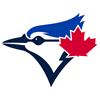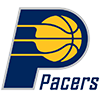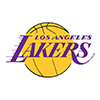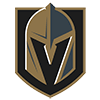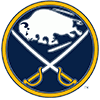Regular readers of this space know I'm a big fan of using average exit velocity on fly balls and fly ball distance as proxies for power. With a little over a month in the books, I thought it would be interesting to check out some early power numbers with an eye on unearthing some batters with a surge in their future, as well as overperformers.
Two different approaches will be utilized. The first identifies players performing above or below normal levels, with the second focusing on hitters doing what is expected but with some early good or bad luck.
High Average Fly Ball Distance
The first group of hitters have an average fly ball distance well above their norm. It could be a small sample anomaly, or perhaps representative of a new skill level with respect to increased average exit velocity.
| Player | # Fly balls | 2021 FB AEV | FBDst | HR | Career FB AEV |
|---|---|---|---|---|---|
| Evan Longoria | 14 | 100.7 | 335.6 | 4 | 95.6 |
| Byron Buxton | 19 | 100.1 | 361.9 | 9 | 95.9 |
| Mike Trout | 16 | 99.5 | 363.7 | 8 | 93.9 |
| Buster Posey | 13 | 98 | 352.1 | 7 | 93.6 |
| Andrew McCutchen | 13 | 97.9 | 359.9 | 4 | 93.1 |
| Salvador Perez | 24 | 97.8 | 344.5 | 6 | 93.2 |
| Tyler Naquin | 19 | 96.8 | 335.5 | 6 | 92.8 |
On paper, the idea is to be ready for a lower average exit velocity the rest of the season, with a likely drop in homers. To be honest, one doesn't need next-level analysis to draw this conclusion as it unlikely any of these hitters are doing something to
Regular readers of this space know I'm a big fan of using average exit velocity on fly balls and fly ball distance as proxies for power. With a little over a month in the books, I thought it would be interesting to check out some early power numbers with an eye on unearthing some batters with a surge in their future, as well as overperformers.
Two different approaches will be utilized. The first identifies players performing above or below normal levels, with the second focusing on hitters doing what is expected but with some early good or bad luck.
High Average Fly Ball Distance
The first group of hitters have an average fly ball distance well above their norm. It could be a small sample anomaly, or perhaps representative of a new skill level with respect to increased average exit velocity.
| Player | # Fly balls | 2021 FB AEV | FBDst | HR | Career FB AEV |
|---|---|---|---|---|---|
| Evan Longoria | 14 | 100.7 | 335.6 | 4 | 95.6 |
| Byron Buxton | 19 | 100.1 | 361.9 | 9 | 95.9 |
| Mike Trout | 16 | 99.5 | 363.7 | 8 | 93.9 |
| Buster Posey | 13 | 98 | 352.1 | 7 | 93.6 |
| Andrew McCutchen | 13 | 97.9 | 359.9 | 4 | 93.1 |
| Salvador Perez | 24 | 97.8 | 344.5 | 6 | 93.2 |
| Tyler Naquin | 19 | 96.8 | 335.5 | 6 | 92.8 |
On paper, the idea is to be ready for a lower average exit velocity the rest of the season, with a likely drop in homers. To be honest, one doesn't need next-level analysis to draw this conclusion as it unlikely any of these hitters are doing something to ratchet up their average exit velocity on fly balls. That said, looking at the list from a practical sense, there aren't any obvious guys to deal, at least with a realistic chance of improving your team in a competitive league. It's easy to recommend a sell high, but is there someone willing to acquire any of these players at the price you'd need to make it worth dealing them?
Low Average Fly Ball Distance
| Player | # Fly balls | 2021 FB AEV | FBDst | HR | Career FB AEV |
|---|---|---|---|---|---|
| Marcell Ozuna | 29 | 92.5 | 310.9 | 4 | 95.3 |
| Pete Alonso | 22 | 91.7 | 316.1 | 3 | 95.6 |
| Mookie Betts | 22 | 91.4 | 315.7 | 3 | 94.2 |
| Maikel Franco | 17 | 91 | 300.1 | 2 | 94.3 |
| Avisail Garcia | 15 | 90.6 | 322.4 | 3 | 95.4 |
| Gary Sanchez | 12 | 90.3 | 296.8 | 1 | 97.5 |
| Michael Conforto | 20 | 89.8 | 284.7 | 2 | 94.2 |
| Mitch Moreland | 11 | 88.8 | 287.9 | 2 | 93.9 |
| Daniel Vogelbach | 11 | 88.2 | 283.5 | 1 | 92.7 |
| Didi Gregorius | 19 | 85.8 | 291.5 | 2 | 90 |
| Corey Dickerson | 11 | 84.8 | 286.9 | 1 | 90.7 |
I suppose there is a chance of finding a panicked team manager growing impatient with Ozuna, Alonso or Betts. The rest of the list is more interesting in terms of trade targets to improve power.
The weather should be warming up in Baltimore with the ball flying out of Camden Yards soon. Franco's fly balls are down, but history suggests he'll pick up the pace the rest of the season.
With Christian Yelich out indefinitely, Garcia is quite intriguing. Like Franco, he should benefit from a power-friendly home venue in American Family Field.
Admittedly, the Mets have been playing regularly for a couple weeks, but some of Conforto's slow start can be attributed to the stop-and-go nature of the first few weeks. Plus, the cold weather in the Northeast has limited carry, lowering average fly ball distance.
Lucky Home Run Total
Using the fact average fly ball distance (and average fly ball exit velocity) correlate well with HR% (homers per plate appearance), a player's expected home runs can be determined. Comparing expected to actual pinpoints those incurring some good or bad fortune in the early going. The following batters' homers exceed what's expected based on average fly ball distance.
| Player | # Fly balls | 2021 FB AEV | FBDst | HR | Expected HR |
|---|---|---|---|---|---|
| Mitch Haniger | 31 | 94.5 | 317.2 | 8 | 3 |
| Eduardo Escobar | 33 | 92.4 | 316.3 | 7 | 3 |
| Vladimir Guerrero | 17 | 94.5 | 316.9 | 6 | 2 |
| Brandon Belt | 18 | 97.9 | 309.6 | 6 | 1 |
| Yermin Mercedes | 22 | 92.2 | 307.9 | 5 | 1 |
| Alex Bregman | 19 | 89.4 | 307.7 | 5 | 1 |
Especially early in the season, whether a homer is classified as a fly ball or line drive can skew tables of this nature. Even so, prorating the first five players yields higher than projected totals. Bregman always makes this list as the Crawford Boxes are very inviting for righty swingers.
Before selling high on Haniger, his fly ball distance is low for his average exit velocity, so any regression could be balanced by deeper fly balls. Still, selling high could be a profitable endeavor if you have other needs.
Ignore the data on Guerrero as line drive classification no doubt has an effect.
Belt's fly ball distance is way out of whack with his average exit velocity. Leaving Coors Field after this week's exploits is a bigger concern. Though, if someone wants to sell high after the week he had, Belt's average exit velocity on fly balls should generate more power as the season progresses.
Mercedes has been a great story, but personally I'm selling. A below average exit velocity on fly balls is not a harbinger for more power.
Unlucky Home Run Total
| Player | # Fly balls | 2021 FB AEV | FBDst | HR | Expected HR |
|---|---|---|---|---|---|
| Freddie Freeman | 29 | 95.8 | 341.7 | 7 | 11 |
| Joey Votto | 23 | 100.1 | 343.6 | 5 | 9 |
| Carlos Santana | 23 | 96.2 | 339.3 | 5 | 8 |
| Kyle Seager | 33 | 95.7 | 338.5 | 4 | 11 |
| Rafael Devers | 17 | 97.7 | 354.9 | 4 | 9 |
| C.J. Cron | 20 | 92.3 | 339.5 | 4 | 7 |
| Willy Adames | 28 | 95 | 336.5 | 3 | 9 |
| Garrett Hampson | 26 | 91 | 336.2 | 3 | 8 |
| Matt Carpenter | 18 | 97.3 | 343.1 | 3 | 7 |
| Freddy Galvis | 17 | 94.6 | 342.3 | 2 | 6 |
| Gio Urshela | 18 | 93.8 | 333.9 | 2 | 5 |
Votto is hurt, so any plans of acquiring the veteran are on hold. However, there are some very intriguing names populating the rest of the list.
There are myriad reasons to buy low on Freeman, so add this to the list.
If you need pop, I'd be sending offers for Santana, Seager, Cron, Adames, Hampson and Urshela as they're all due for an upswing and could be available. Carpenter and Galvis are also on the list, but I'm concerned about Carpenter's health and playing time while there's no way Galvis maintains his current exit velocity and fly ball distance. Hmm, as I typed that, it struck me that while Galvis may not be a viable primary target in a deal, getting him as a balancer in a two-for-two could pay dividends.
Bonus Players to Acquire
While there are some actionable items above, there aren't as many as I hoped. As such, here are eight more batters to target even though they didn't make it through the requisite filters.
Trent Grisham: Grisham is a buy-high scenario as his team manager may have health concerns. The driving force here is that he is not only running but his power metrics are quite strong. At the beginning of the season, it appeared Grisham could hit low in the order when the Padres faced a southpaw but so far, he has remained near or at the top.
Sean Murphy: Murphy's average fly ball distance is low relative to his average exit velocity on fly balls. This could be a classification thing, but it also could be a sign his power picks up. With four homers, he's been no slouch, but a .213 average could be uncomfortable for his team manager.
Josh Bell: This trend began last season, so there's a possibility Bell will not revert to previous levels, but if he raises his fly ball rate to where it was in 2019, his underlying metrics support a huge power spike. In 2019, Bell's fly ball rate was 37%. Last year it dipped to 26%, which is where it sits this season.
Austin Hays: His average exit velocity on fly ball is lower than usual, so this is a leap of faith it increases. If it does, Hays will benefit from Camden Yards.
Pavin Smith: Like Bell, Smith doesn't loft enough batted balls to take advantage of his latent power metrics. Smith could also be facing a playing time crunch with Christian Walker off the IL and Ketel Marte soon to follow. Consider Smith more of a stash who is possibly available if his current team needs more reliable playing time.
Jonathan India: India obviously hasn't established a baseline but so far, he's exhibiting excellent velocity on fly balls. It may be an early blip, or it may portend developing power. I'd like him on my roster when we find out.
Hunter Dozier: The window to acquire Dozier may be closing as he's getting his power stroke back after playing with a hurt hand. Obviously, we're not taking about a guy capable of leading the league in homers, but Dozier can be a nice ancillary part to a fantasy offense.
Ian Happ: Add Happ to the list of those with a low fly ball rate to begin the season. He was just starting to come around before colliding with Nico Hoerner last Sunday. The initial worry was a concussion, but Happ has cleared that protocol and is only dealing with sore ribs. He could be my favorite trade target of anyone discussed.









